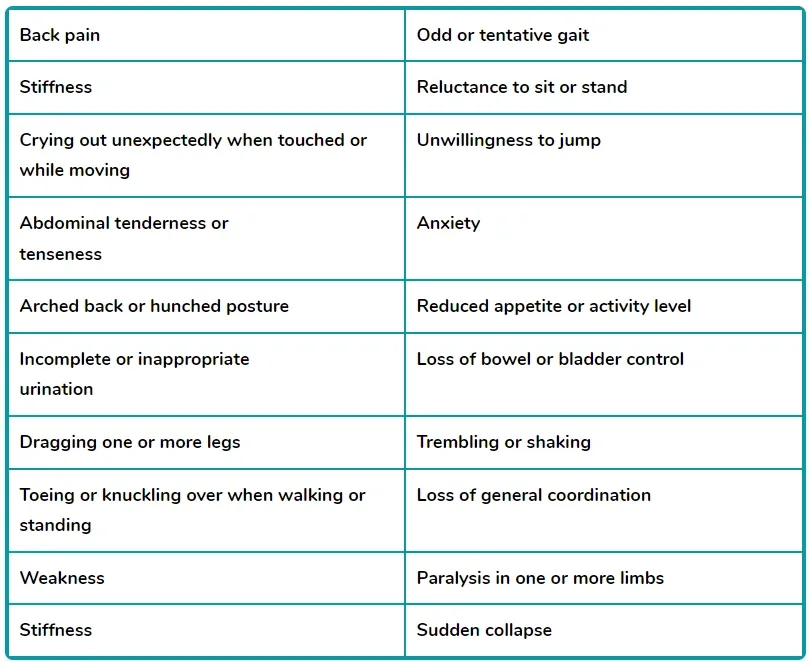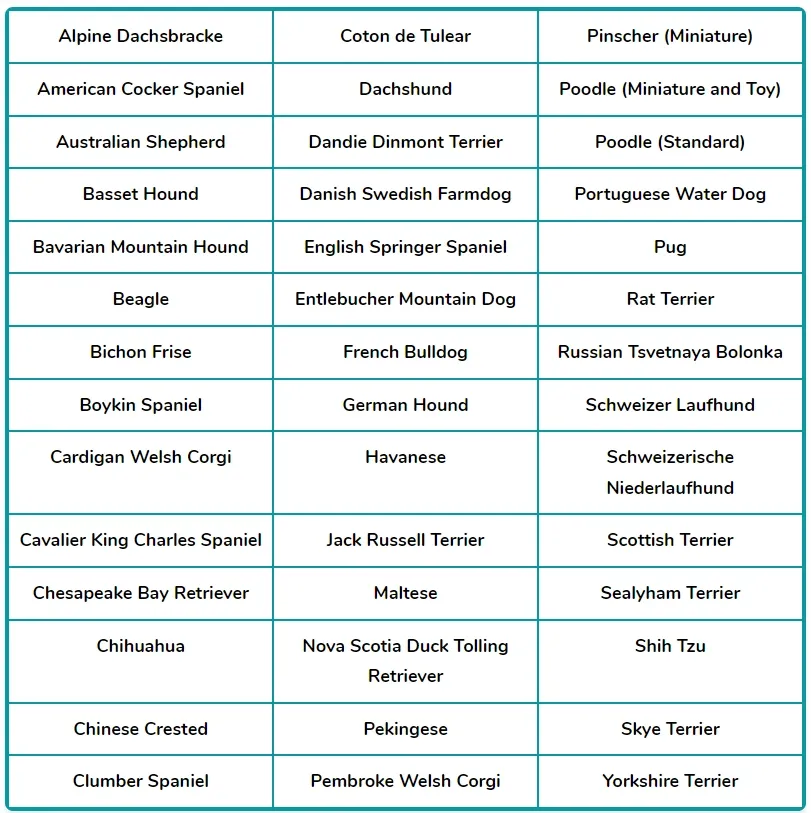Short and Sweet, but Handle with Care
Do 'shorties' require more visits to the veterinarian? Can they get around by themselves? Know the special needs of short-legged pets and the extra steps you can take to help them live a happy, healthy, and comfortable life.

STORY AT-A-GLANCE
- Short-legged dogs are adorable, but unfortunately, their short legs are a result of chondrodystrophy (CDDY); not long ago, researchers identified a genetic mutation in several dog breeds that results in the condition
- CDDY results in not only abnormally short legs in certain breeds, but can also cause premature degeneration of intervertebral discs, resulting in Hansen Type I intervertebral disc disease (IVDD)
- Currently, there are over 40 dog breeds in which the CDDY gene mutation has been identified
- A primary symptom of IVDD is reluctance to move the neck and head, a lowered head, and/or moving only the eyes to look at objects; there are many other symptoms as well
- Treatment of IVDD can involve medical management and/or surgical intervention; regular physical therapy is a critical component in treating the disease and reducing the risk of recurrence
Editor's Note: This article is a reprint. It was originally published December 13, 2023.
Dogs who are very low to the ground are undeniably adorable. But unfortunately, what many pet parents don't realize is their dog's short legs are due to a cartilage disorder called chondrodystrophy (CDDY) that can cause significant health problems in some of these dogs.
In 2017, researchers at the University of California-Davis identified a genetic mutation across dog breeds that results in chondrodystrophy, which is characterized by reduction of long bone length (shorter legs) as a result of early changes in the structure of growth plates.
CDDY can also trigger an abnormal process that causes premature degeneration of intervertebral discs. According to the UC-Davis researchers:
"Two retrogene insertions of functional fibroblast growth factor 4 (FGF4) explain short-legged phenotypes of dogs. FGF4 gene is involved in many biological processes including bone development."1
The research team published their findings in the Proceedings of the National Academy of Sciences.2
"Dogs with intervertebral disc disease (IVDD) are 50 times more likely to have this mutation; that's an incredibly strong correlation with disc disease," said Dr. Danika Bannasch, a UC-Davis veterinary geneticist and the paper's lead author.
"Being able to identify the cause of this painful condition is the first step to alleviating pain and suffering for dogs at greatest risk."3
Gene Mutation Can Cause Both Abnormally Short Legs and IVDD
The UC-Davis gene mutation discovery follows the 2009 discovery of an FGF4-retrogene insertion in dog chromosome 18 (FGF4-18), which causes chondrodysplasia (CDPA) — abnormally short legs — in certain breeds such as the Basset Hound, Pembroke Welsh Corgi, Dachshund, West Highland White Terrier, and Scottish Terrier.
The chondrodystrophy (CDDY) mutation is actually a second FGF4-retrogene insertion in dog chromosome 12 and includes both the short-legged defect and abnormal premature degeneration of intervertebral discs that leads to Hansen Type I intervertebral disc disease (IVDD).
In a second type of IVDD, Hansen Type II, there's a gradual progressive protrusion of disc material that affects non-chondrodystrophic dogs (breeds without the gene mutation) who are older, usually between the ages of 8 and 10. This form of IVDD is most commonly seen in German Shepherds, Labrador Retrievers, and Dobermans.
In addition, most aging dogs have some degeneration of intervertebral discs, which commonly results in a condition known as spondylosis. Most of the time, spondylosis doesn't cause pain or weakness and doesn't progress to intervertebral disc disease.
When Good Discs Go Bad
Intervertebral discs are cushioning pads of fibrocartilage that sit between most of the vertebra of the spinal column. The discs have an outer layer of tough fibrous tissue and a center that is a gel-like substance. The discs act as shock absorbers and allow for flexibility of the vertebra in the spinal column.
In dogs with the CDDY mutation, the gel-like substance inside the discs calcifies at an early age, typically between birth and 1 year, and causes degeneration of all the discs in young dogs. These abnormal discs are prone to herniation into the spinal canal, causing severe pain, nerve damage, and sometimes, paralysis.
This is the condition known as intervertebral disc disease or IVDD, and even in dogs without the CDDY variant, intervertebral discs are subject to degeneration, bulging outward, and bursting or rupturing.
Depending on the location of the damaged disc, problems can occur anywhere in the animal's body from the neck to the rear limbs. In cats, the problem discs are more often found in the neck and upper back. In humans, the condition is sometimes called a slipped disc or a herniated disc.
Symptoms of IVDD
Signs you should watch for include reluctance to move the neck and head or a lowered head. Some dogs only move their eyes to look at you — they don't want to move their head or neck because it's painful. An animal holding his head low and shifting just his eyes to look at you is definitely suspicious for IVDD. Other symptoms can include:

Breeds in Which the Chondrodystrophy Gene Mutation Has Been Identified
According to the UC-Davis researchers:
"CDDY is inherited as a semi-dominant trait for height, meaning that dogs with 2 copies of the mutation are smaller than dogs with only 1 copy. With respect to IVDD, the inheritance follows a dominant mode, meaning that 1 copy of the FGF4-12 mutation is sufficient to predispose dogs to IVDD.
Dogs that have both FGF4-12 and FGF4-18 show a more drastic reduction of leg length. One area of current investigation is how CDDY and CDPA might work in concert to increase the risk of IVDD."4
The CDDY variant has been found in several breeds, including:

Research on the distribution of this mutation is ongoing, so this isn't a complete list of affected breeds. If you have a dog with short legs and a long torso, I recommend beginning a musculoskeletal support protocol at six months of age, maintain your dog's weight throughout life and make sure she gets daily core-strengthening exercise.
Treatment Options for Dogs with Intervertebral Disc Disease
Once a diagnosis of IVDD has been made and the affected discs located, a treatment plan can be developed. The goals for treating IVDD patients are to eliminate pressure on the spinal cord and resolve inflammation in order to return the pet to a pain-free and fully mobile life.
Treatment can involve medical management or surgical intervention, depending on the severity of the disease. If the dog no longer has mobility and has lost deep pain sensation, the connection from the brain to the body has been severely compromised.
Unfortunately, the only way to attempt to re-establish the connection is with surgery. Time is of the essence in these situations and delaying surgery even for 24 hours can often dramatically reduce the possibility of a positive outcome.
If surgery is necessary, there are a variety of techniques that can be used. The goal of any procedure is to relieve pressure on the spinal cord at the site of the damaged disc.
In acute cases where the animal still has some mobility and a superficial pain response that indicates there's still a viable connection between the brain and the body, pain management and control of inflammation should be accomplished first.
In any case, once a pet's pain and neurologic symptoms are well-controlled either medically or surgically, there will need to be an extensive period of complete rest in order for healing to occur. All disc patients must have a well-padded bedding area — a small area they can't get up and move around in.
If the animal can't reposition herself on her own, it's important to turn her every few hours to prevent bedsores. Assistance with urination, defecation, eating, and drinking is often also necessary.
Why Physical Therapy Is so Important for IVDD Patients
During this time of complete rest, there are some very important therapies that can speed healing and improve your pet's chances of a successful outcome. Acupuncture and electroacupuncture can be very beneficial in helping to re-establish the nerve connections in the body, as can peptide therapy.
Massage with or without medical-grade therapeutic essential oils is very good for disc patients as well. Massage of limbs and axial muscles not directly involved with the site of the injury and passive range of motion exercises can help improve circulation and assist with lymphatic drainage.
Physical rehab technicians are trained to use gentle joint compressions to help maintain patient comfort and reduce pain. Also, these techniques help to maintain limb strength and muscle mass.
Laser therapy at the surgical site or over the area of injury will promote a more rapid healing response, and neuromuscular electrostimulation will help slow muscle atrophy from disuse.
When healing is far enough along, hydrotherapy (e.g., underwater treadmill, swim therapy) is a wonderful tool for helping the body recover from neurologic trauma. As patients continue to improve, a land treadmill enhances endurance and improves gait and movement patterning.
Physio balls and specific therapeutic exercises can improve limb strength and core stability. Cavaletti poles are very effective for improving proprioceptive input and coordination.
Pets who undergo rehabilitation after treatment for intervertebral disc disease heal faster, with a far better long-term outcome than pets treated with medical or surgical intervention alone. The good news is most pets who maintain deep pain sensation through an episode of this disease can be well managed without surgery, especially in cases where the condition is diagnosed and treated early.
Unfortunately, IVDD symptoms recur in about 50% of pets, especially if they're obese, out of condition, or if they're allowed to jump freely. This is why regular physical therapy that focuses on establishing and maintaining core strength and muscle tone reduces the risk of recurrence and helps keep disc patients' quality of life excellent. Dogs with disc issues should remain on chondroprotective agents for the rest of their lives.











